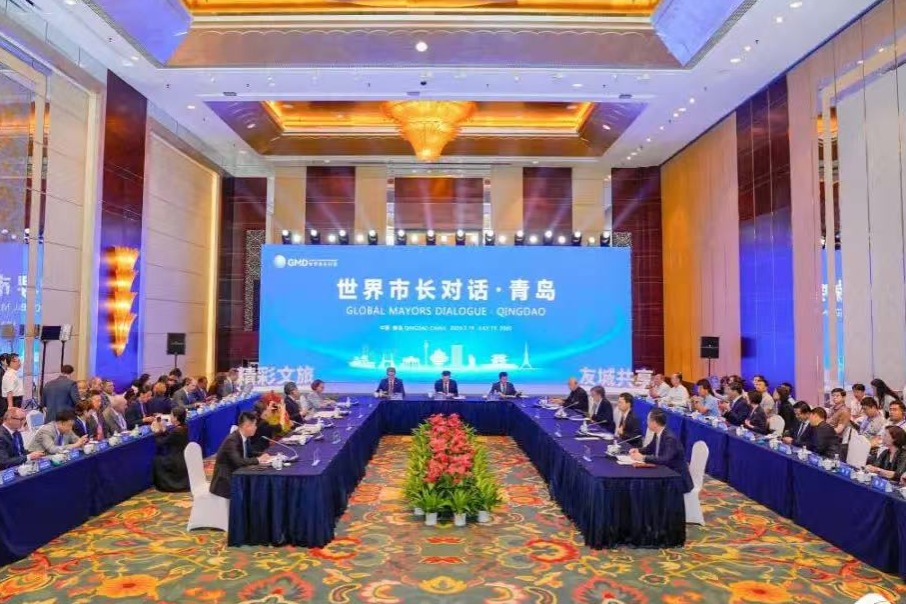Texas, Germany offer lessons on renewable power

Their programs can inspire areas of China that have strong renewable energy capacity but fragmented electricity markets
China currently leads the world in renewable energy capacity and production. By scaling up manufacturing of solar and wind power, China has fundamentally revolutionized the economics of energy production. However, problems integrating this capacity with the electrical power grid resulted in 17 percent of China's wind and solar power being wasted, or "curtailed", in 2016 - a rate far worse than in other developed and developing countries with higher penetrations of wind and solar energy.
The power is generated but never gets to end users. Making wind and solar power work requires upgrading the electrical grid and reforming the pricing of electrical power in addition to building generating facilities.
Last summer, the Paulson Institute published a study showing how Texas and Germany integrated large portions of renewable energy into their grids despite renewable energy being located far from population centers. We conclude that these lessons are applicable to the Beijing-Tianjin-Hebei region, which is often called Jing-Jin-Ji.
Texan and German policymakers said success at renewable integration depends on three key factors: First, design spot power markets where power is traded in near real-time. Second, establish larger balancing areas for dispatching renewable energy across previously separated regions. Third, increase investment in transmission, targeted directly at increasing renewable energy penetration.
In July 2016, China's National Energy Administration called for Jing-Jin-Ji to become a power-trading pilot region with an emphasis on both direct power trading and spot markets. The goal is to enable greater proportions of wind and solar power from Zhangjiakou to reach Beijing and southern Hebei.
In the United States, the merits of power reforms in Texas are starting to be recognized and adopted in neighboring regions. In Europe, countries are expanding cross-boundary transmission and unifying energy markets. In both, distributed energy is becoming more widespread due to market forces and grid policies designed to encourage its adoption.
Texas wind and solar, virtually all built and owned by private companies, now provides 15 percent of the electricity generated by the state, and is continuing to rise. On March 23, wind set a record of meeting over 50 percent of the state's electric load. Significantly, the state is gradually retiring coal capacity and replacing it with energy generated by solar, wind and natural gas. In June, the state approved two new lines designed to integrate new solar capacity in western Texas.
The addition of new power lines and new renewable energy capacity has produced enormous benefits. Texas power prices remain among the lowest in the nation, and prices have fallen since the introduction of retail competition, spot markets, and renewables-focused transmission. And, the grid remains highly reliable, with minimal wind curtailment.
Texas is seen by both the major political parties in the US as a success case for renewable energy. Rick Perry, the former governor of Texas who presided over the state's wind-power transmission expansion, is now secretary of energy for the United States. President Donald Trump reportedly asked Perry to "do for the US what you did for Texas".
Other states are starting to look to Texas as a potential source for low-carbon energy. Though Texas has long boasted a grid that was relatively isolated from the rest of the US, the state is now considering bolstering its links to neighboring regions. One transmission proposal under consideration, called Southern Cross, would send low-cost wind energy from Texas into the US southeast. The Southern Cross line would be paid for by private wind generators that use the line for exporting power.
Now that Texas has led the way in showing how major transmission investments can help clean the grid, other regions of the US have gotten into the game. Today there are a dozen major transmission projects winding their way through the state and federal bureaucracy, many of which are designed specifically to integrate wind and solar energy.
New lines are only part of the picture, however. The Texas case illustrated the importance of market reforms, particularly spot markets, to the successful integration of renewable energy. For example, the Plains states established what is known as the Integrated Marketplace, which includes spot markets and day-ahead power markets. The Integrated Marketplace replaced a complex web of 16 separate markets that focused on bilateral contracts. In its first two years of operation, it saved $240 million for its customers.
Similarly, in 2014, California and Nevada linked their power markets, a decision that is credited with major cost savings for customers in both states. In 2015, legislation in California set out a path for the state's grid operator to create an integrated, multistate grid across the entire western US. Independent studies suggest it would save California customers $1.5 billion annually. Wind in Wyoming and the Pacific Northwest produces most energy when California's solar resources are weakest. Solar in California and Arizona can balance each other.
Many of these lessons remain important for areas of China that have strong renewable energy capacity or targets, but fragmented electricity markets. As Beijing and Zhangjiakou prepare for the greenest Olympics ever in 2022, policymakers can derive inspiration from studying international cases of power market reform.
The author is a consultant of the Paulson Institute's Beijing office. The views do not necessarily reflect those of China Daily.
(China Daily European Weekly 07/21/2017 page9)
Today's Top News
- Mayors from around the world gather in Qingdao for dialogue
- Premier announces construction of Yarlung Zangbo hydropower project
- Digital countryside fueling reverse urbanization
- 'Sky Eye' helps unlock mysteries of the universe
- China offers LAC development dividend
- Future sectors to receive more play






























